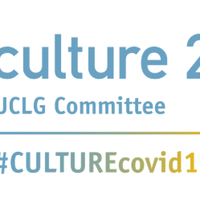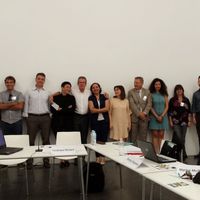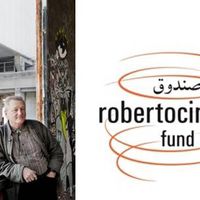Cultural Mobility: A Vital Tool For Cultural Rights

“To participate in a cultural life” is a human right. This is part of the Universal Declaration of Human Rights, a milestone document proclaimed by the United Nations General Assembly in Paris on 10 December 1948 enumerating certain freedoms that should be inherent and inalienable to every member of the human race.
This means that everyone, regardless of nationality, ethnicity, caste, creed, gender or disability, should have free access to culture, and the ability to contribute to a cultural life.
Access to culture & the ability to contribute to a cultural life
What is access to culture? It encompasses physical access to cultural events and sites such as theatres, museums, libraries, recreation/leisure facilities, religious places of worship, sports arenas, and public spaces. Moreover, it also encompasses non-physical or remote access to cultural products like literary works, movies, news, and information related to arts and culture; remote access can be mediated through digital means such as mass media (e.g. TV) and the Internet.
The ability to contribute to a cultural life, on the other hand, means that everybody should have the freedom to exercise practices that are pertinent to one’s own culture, to express themselves culturally, and to be able to take part in exchanges with other people of different cultural backgrounds, thus having a diversity of cultural expressions.
Both access to culture and the ability to contribute to a cultural life implicitly implies that people should be able to freely travel from one place to another. So in order to fulfil these cultural rights that are enshrined as human rights, an environment that enables cultural mobility must be in place to facilitate access and to enable cultural contributions from a larger part of society.
From 28-30 September 2017, over 200 transport authorities, policymakers, urban planners, environmentalists, artists, and researchers gathered at the "Creative Mobilities" 1st International Forum, which took place in Grenoble, France. The main goal of the forum was to discuss mobility as one of the vital tools in promoting a cultural life for all.
Transport as a cultural experience
When one speaks of ‘mobility’, the first definition would be transport. Public transport is part of the daily life of millions of people and transit environments can be very hectic. As a result, art in public transport is steadily gaining recognition as a powerful means of humanising the frantic transit environment. There are numerous case studies from around the world where art is incorporated in trains, planes & taxis, as well as public spaces, to improve the overall mobility experience of users, increase the quality of human connections, & revitalise urban heritage.
Gautier Chatelus, Senior Director for Investment, Caisse des Dépôts et Consignations, France (Deposits and Consignments Fund, France) posits a question of time: A regular commuter in Paris may spend 2 hours a day on the train. In fact, many people choose taking the train rather than driving a car to be able to work en route. How can we take advantage of this? The 2 hours must not be dead time. Each trip on the train must be an engaging experience, with constant connectivity.
In Germany, a new company Locomore, promotes access to culture and interactions between passengers by having “themed” cars” where people of similar interests are put together (e.g. football, comics). It presents a new experience of mobility that is playful and yet respectful of the environment. And the fares are much cheaper than the main option, Deutsche Bahn.

Meanwhile, an established Singaporean architecture firm DP Architects, spearheads a corporate social responsibility (CSR) initiative that takes on a very common everyday public space: the bus stop. Veering away from the notion that bus stops should just be functional, the team of architects transformed the common bus stop into a social space that enhances the mobility experience. When they launched the idea, Singapore's Land Transport Authority (LTA) and Urban Redevelopment Authority (URA) came on board. Called Project Bus Stop, the “smart” bus stop features free wifi, mobile phone charging points, interactive smart boards with useful content, an e-books download point, a green roof, bicycle parking and even a swing. It also showcases works by contemporary local artists.
More examples of art/culture in transport here: http://creative-mobilities.org/bonnes-pratiques/
Mobility of people and of information
But in other areas of the world, there is no mobility to “enhance” with art. In many places and for many people, cultural mobility remains absent. Susan Prahl, founder of Kid’s Fest Sarajevo, states that,
“Free access to culture is a human right, but the lack of mobility often deprives large parts of the population by fact from this freedom. Very often we ‘point a finger’ at non-democratic countries where freedom of expression / culture is prohibited, whereas it seems to me more important to look at ‘free countries’ and state how unfree a lack of mobility makes our society and in my field, especially the children. Creative mobility is indeed a main aspect in the cultural development discussion.”
Indeed, access and the ability to participate in cultural events should be a freedom enjoyed by all, but both a lack of infrastructure and funding in this regard hinders many people from seizing opportunities.
It is very common for artists and cultural practitioners to be invited to residencies, festivals, workshops and conferences that will benefit their professional development and artistic practice; these opportunities of exchange also serve as a foundation for a more long term effect in the cultural scene when they go home. But if they are unable to travel, how will they participate in the first place?
As one form of response to this gap, many organisations around the world have mobility grants. One example is Mobility First! by the Asia-Europe Foundation (ASEF), a new fund launched in 2017 that supports international travel for artists and cultural professionals between Asia and Europe. The existence of cultural mobility grants from various organisations operating in different regions of the world supports the global belief that people-to-people exchanges benefit not only the individual but also the public good by promoting a diversity of cultural expressions.
And it is not just the mobility of people that is essential, but also the mobility of education, of information, of knowledge. Technology plays a big role is granting access to cultural information to a wider, global audience, as it acts as a tool for the transfer of information.
Jeremy Rifkin, an American economist, believes that before we explore how arts can improve our quality of life, we must first be aware of the overall technological infrastructure of our time, which is a combination of: 1) new communication channels, 2) new sources of energy, and 3) new forms of mobility. In the 20th century, the invention of the TV, discovery of oil, and manufacturing of cars changed the entire cultural dynamics of the world. Today we have the Internet, alternative sources of energy like solar, and GPS technology. How do we use these to develop a new cultural vision for the world?
Cultural policy for cultural development
“The nexus of mobility and culture is policy, and therefore, governance,” says Tommaso Vitale, Associate Professor of Sociology at Sciences Po, Paris. Throughout the forum, it was a repeated sentiment that cultural policy is needed to change behaviours, to alter mindsets. Policy is critical in enabling cultural rights.
In this vein, it is good to note that a growing number of cities and local governments all over the world have adopted Agenda 21 for Culture, a guide for public cultural policies. It the founding document of The Committee on Culture of the United Cities and Local Governments (UCLG). The UCLG is a worldwide organisation whose mission is to advocate the incorporation of culture in cities and local governments for cultural development. Agenda 21 for Culture was agreed by cities and local governments from all over the world in 2004 to enshrine their commitment to human rights, cultural diversity, sustainability, participatory democracy and creating conditions for peace. One of the main principles of Agenda 21 is:
“Local governments recognise that cultural rights are an integral part of human rights […] They recognise that the cultural freedom of individuals and communities is an essential condition for democracy. No one may invoke cultural diversity to infringe upon the human rights guaranteed by international law, nor to limit their scope.”
By incorporating culture in urban policies, a participative approach with all stakeholders from different disciplines is more possible because the government encourages and enables the cooperation between public, private and independent sectors of society. It creates a platform for a local transport authority for example to work with an architecture firm who then might engage local artists for a project that benefits the entire community. Having culture in urban policies also makes way to take into account the interests of various parties like the environmentalists, the private sponsors, the entrepreneurs, the artists.
Jean-Pierre Elong Mbassi, Secretary-General of UCLG Africa, eloquently summarises: “Culture is the only way we can have real and equal cooperation on earth. Culture is the entry point to build true human relations and respect for everyone.”
---
Fatima Avila is a Project Manager in the Culture Department of the Asia-Europe Foundation (ASEF). She is in charge of Mobility First! ASEF Cultural Mobility Initiative, which supports international travel of artists and cultural professionals between Asia and Europe. Prior to ASEF, Fatima has worked extensively in the visual arts field as Gallery Manager of Manila Contemporary (Valentine Willie Fine Art) and Tin-aw Art Gallery in the Philippines.
Similar content
deadline
20 Apr 2015
deadline
22 Apr 2022
posted on
25 Jul 2014






